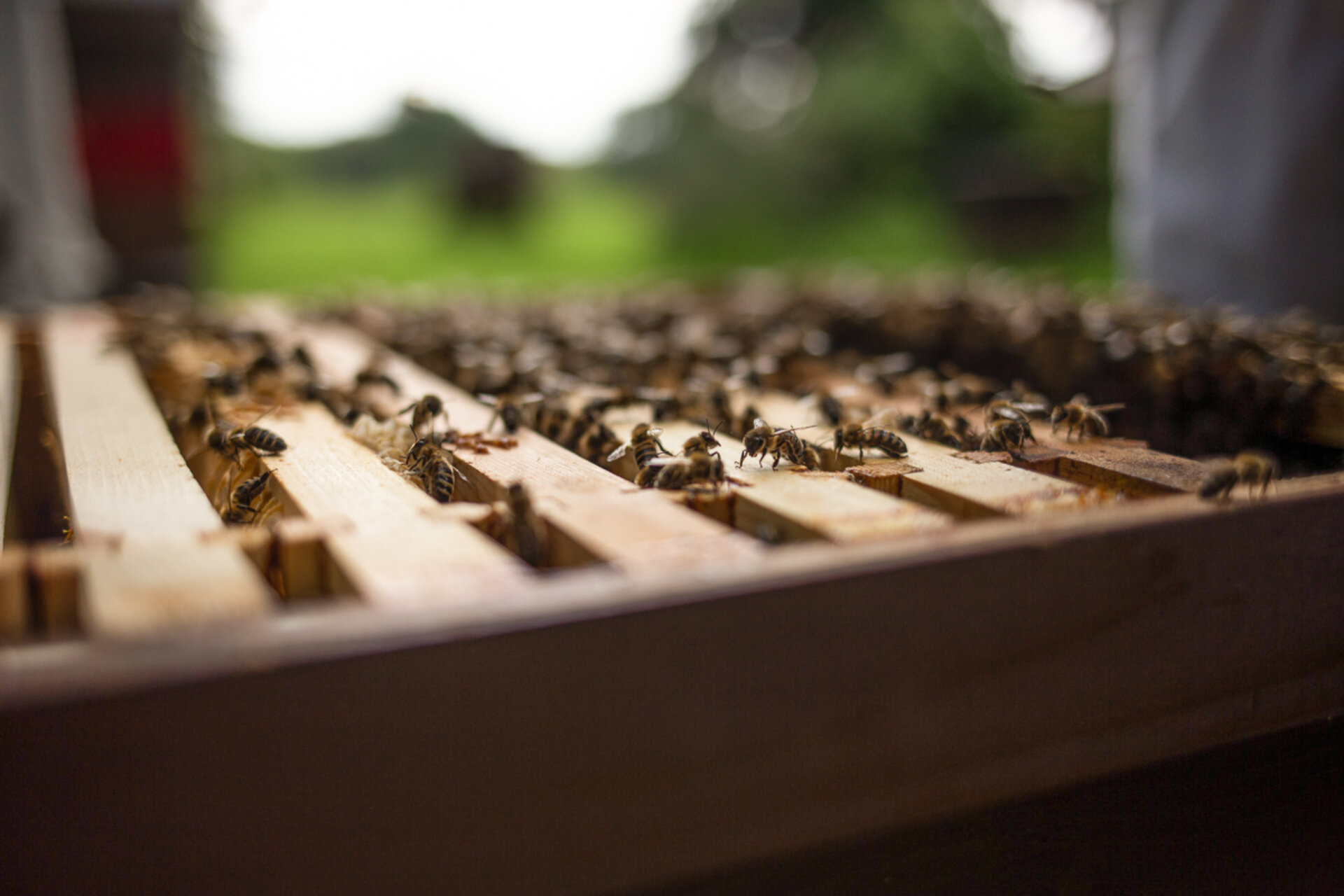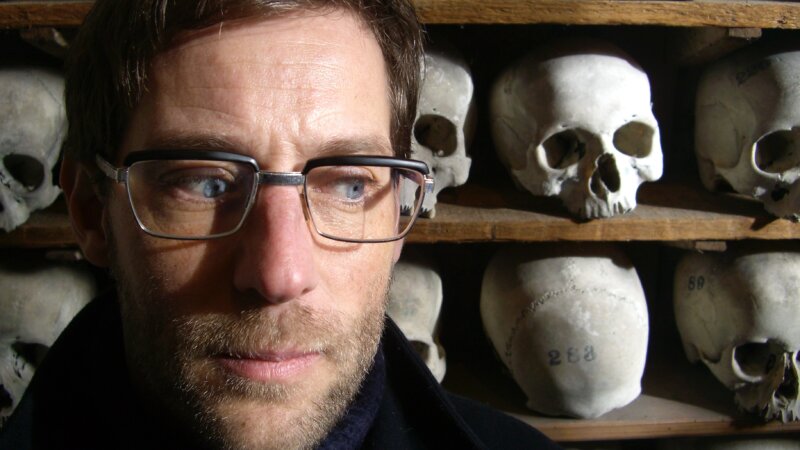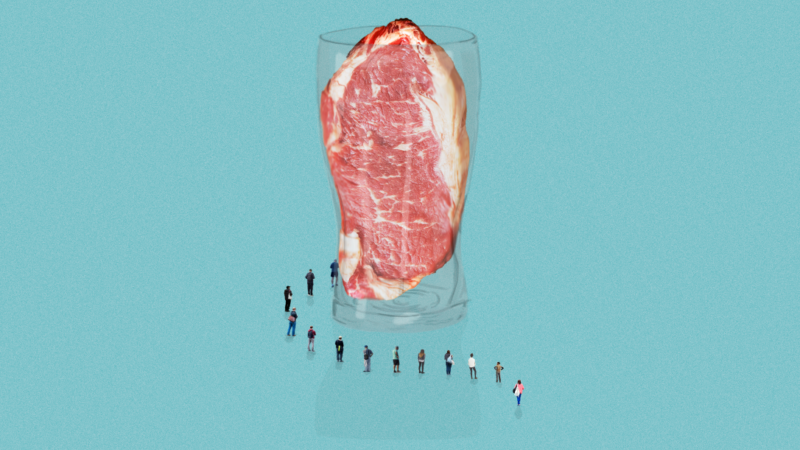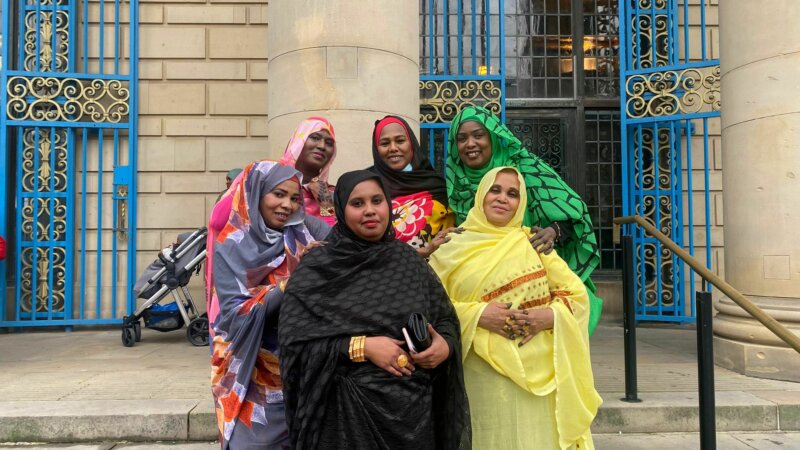Listen to the bees and let them guide you
Award-winning Sheffield-based writer and poet Rachel Bower shares the beauty of beekeeping – and how we can all do our bit to help care for our pollinators.
At the end of June I got a call from a fellow beekeeper, asking if I would help collect a swarm from Rotherham. He had been contacted by a family, who had arrived home from holiday to a huge cluster of honey bees in their front garden.
I was about to meet friends in a beer garden in Sheffield, but I took a diversion, throwing my bee suit and tools in the boot of my car and setting off.
There is a misconception that swarms of bees are highly dangerous. Although a swarm can look and sound very dramatic, bees actually swarm when they’re doing well and looking for a new home. Most are not aggressive and don’t sting, although it’s best not to approach them. They leave their hive, stomachs full of honey, and find somewhere to hang in a cluster until the scout bees find a new home.
This swarm was beautiful. Honey bees are small and vary in colour from golden brown to almost black. This was a tight, heavy cluster hanging low in an ornamental tree, a single mass of thousands of stripy bodies.
We suited up. I always love that moment; pulling on the hood of my bee suit, with its honey bee smells, and entering their world. The delicious mix of honey, smoke, beeswax and cedar was one of the first things that got me hooked.
Our first job was to get the bees into a box. The family watched us from their living room, faces pressed up to the window, filming us as we knocked the bees into the box, praying we had the queen. If the queen was left behind in the tree, the bees would return to her and we’d come back later, after dark, to an empty box.
With a cloud of rowdy bees whining around your head, you can’t forget that they are wild creatures. As any beekeeper will laughingly tell you, bees don’t read the same books as us. They do as they please and there is every chance that a swarm will leave if they don’t like the accommodation you provide.
So I see myself as ‘keeping’ bees in the sense of keeping them going, in collaboration with the beekeeping community, rather than possessing them.
My job is to offer sustenance, to help them adapt to the challenges of modern environments, which range from habitat loss and pesticides to parasites and pathogens. I attend closely and respond as responsibly as I can. In the words of the famous beekeeper Brother Adam, to “listen to the bees and let them guide you.”
A swarm of bees will starve if it cannot find a new home. Like other crucial pollinators, including many butterflies, wasps, bumblebees and small flies, honey bees are endangered. Insects are currently facing high extinction rates, and intensive farming and urban development have led to the destruction of meadows, woodland, hedgerows and verges, leaving some areas with few wildflowers and little shelter.
The British Beekeepers Association website has some brilliant information about what you can do to help, including the top ten flowers you can plant for honey bees, with lots of well-known plants, like snowdrops, crocuses, lavender and foxglove on the list. More plants mean more forage, which leads to stronger bees.
Back at the swarm, my more experienced fellow beekeeper talked me through everything with characteristic friendliness and generosity.
One of the things I love about beekeeping is the community. I’ve met many fascinating people through the local beekeepers’ associations. The work of beekeeping is intergenerational and collective. People offer their time and knowledge freely, for the love of it, always happy to support beginners, from offering advice to helping build a hive or providing an emergency queen. There are also collective initiatives to breed local bees, adapted to local environments and resistant to pests.
I returned to Sheffield full of excitement, the other beekeeper agreeing to collect the box after dark, when most of the bees would hopefully be settled inside.
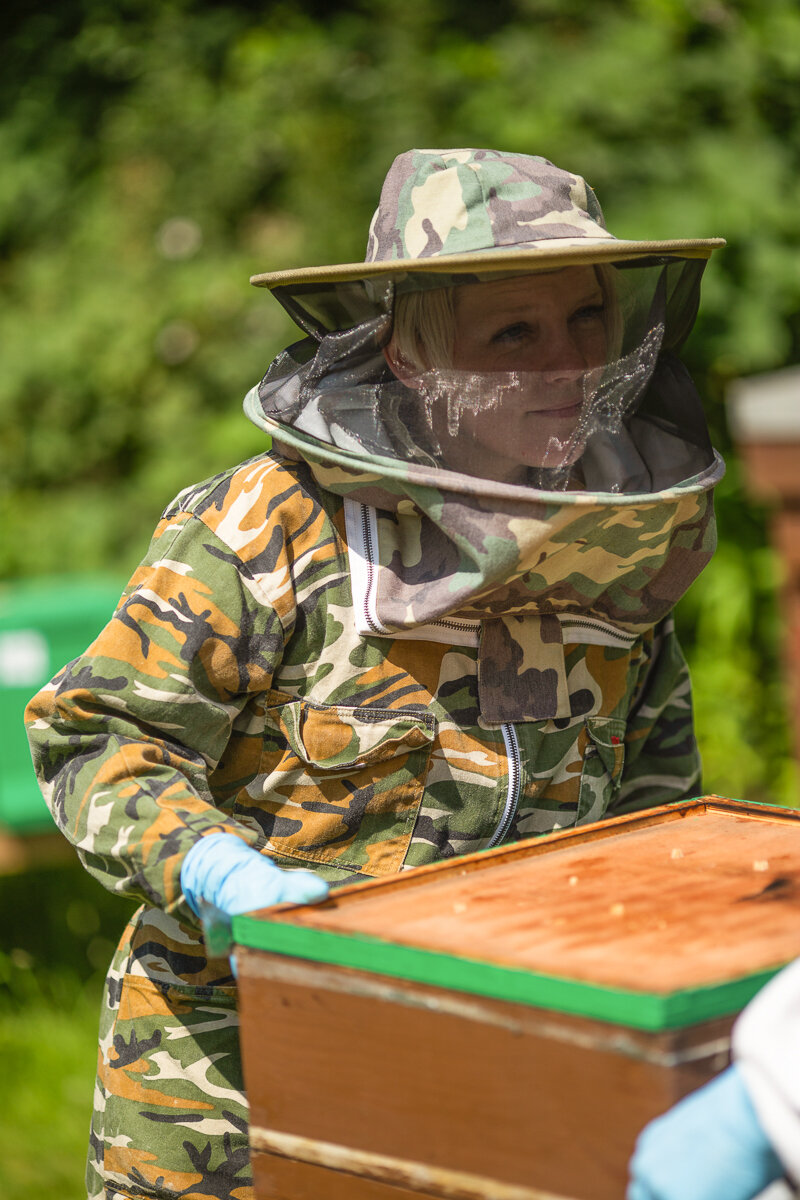
Rachel in her bee suit.
Richard LarsonMy kids were eager for a progress report. The three of them have bee suits and love looking in the hive. Children really get the importance of bees. Whenever I give talks in schools, they ask incredibly astute questions, and it has been wonderful to share the wonders of bees with such a bright and enthusiastic generation, looking at the different colours of pollen, identifying the queen and watching babies hatch.
My fellow beekeeper called me later in the evening to report success. The box was packed with bees. He had run out of space in his apiary after collecting so many swarms this year, so the next morning I drove back early, before the bees got too hot, to strap up the box and put it in the back of my car. Driving down the Parkway with a roaring box of bees is definitely one of the more adrenaline-inducing sides of beekeeping.
The swarm is doing well. They are temporarily in my garden before I move them to Manor Oaks Farm, where I am helping out with their community hives. The bees have been very busy drawing out wax comb into those perfect yellow hexagons, collecting pollen, nectar and propolis – an amazing antibacterial resin which they make from tree sap to seal the hive – and the queen is laying well.
We’re reaching the end of the beekeeping year now and I hope I’ll be able to help the new colony get through winter to next spring. This feels like a minuscule step in the 9,000 year relationship between humans and honey bees, but I hope that by working together we can reverse some of the harm we have done to our environments, and make South Yorkshire a better place to be for our pollinators.


